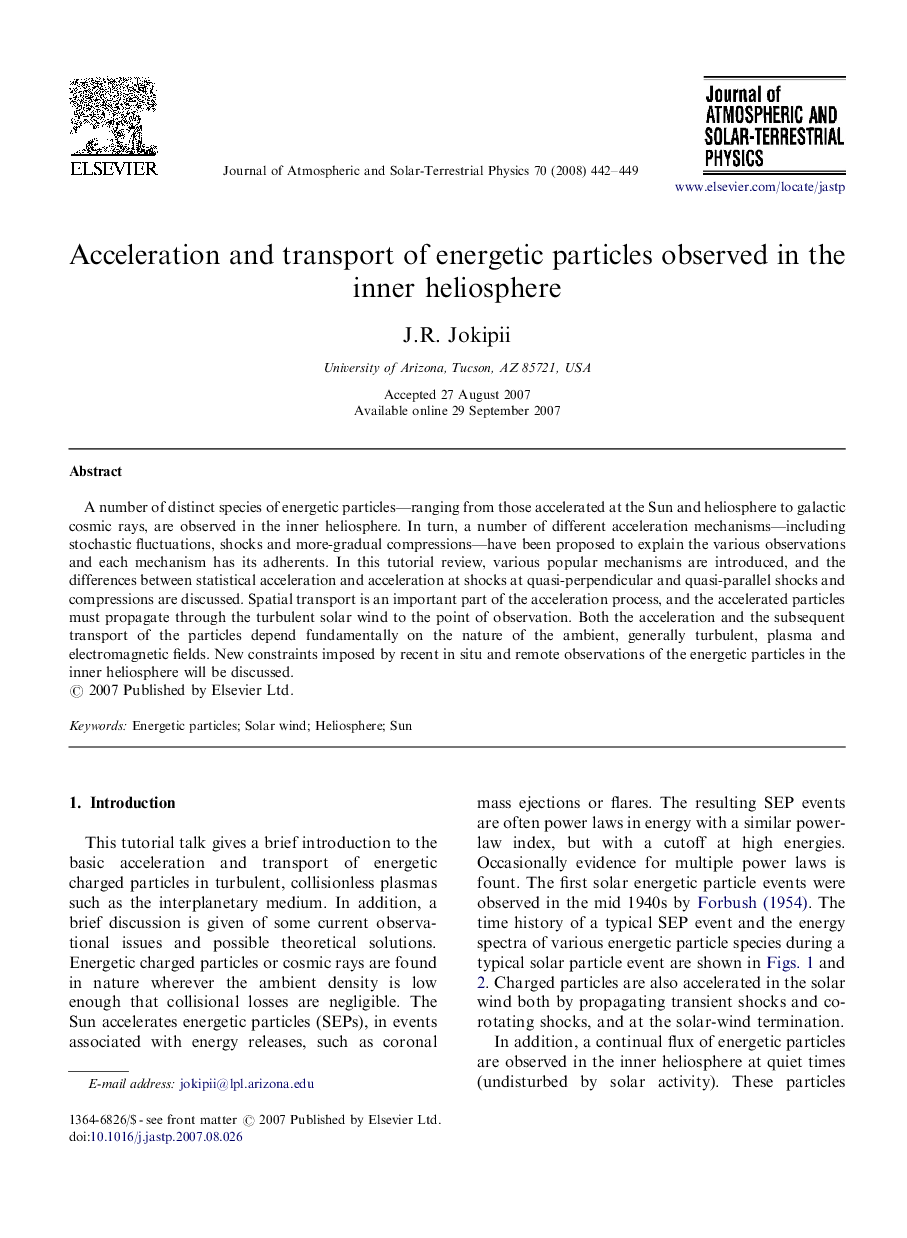| Article ID | Journal | Published Year | Pages | File Type |
|---|---|---|---|---|
| 1778170 | Journal of Atmospheric and Solar-Terrestrial Physics | 2008 | 8 Pages |
A number of distinct species of energetic particles—ranging from those accelerated at the Sun and heliosphere to galactic cosmic rays, are observed in the inner heliosphere. In turn, a number of different acceleration mechanisms—including stochastic fluctuations, shocks and more-gradual compressions—have been proposed to explain the various observations and each mechanism has its adherents. In this tutorial review, various popular mechanisms are introduced, and the differences between statistical acceleration and acceleration at shocks at quasi-perpendicular and quasi-parallel shocks and compressions are discussed. Spatial transport is an important part of the acceleration process, and the accelerated particles must propagate through the turbulent solar wind to the point of observation. Both the acceleration and the subsequent transport of the particles depend fundamentally on the nature of the ambient, generally turbulent, plasma and electromagnetic fields. New constraints imposed by recent in situ and remote observations of the energetic particles in the inner heliosphere will be discussed.
